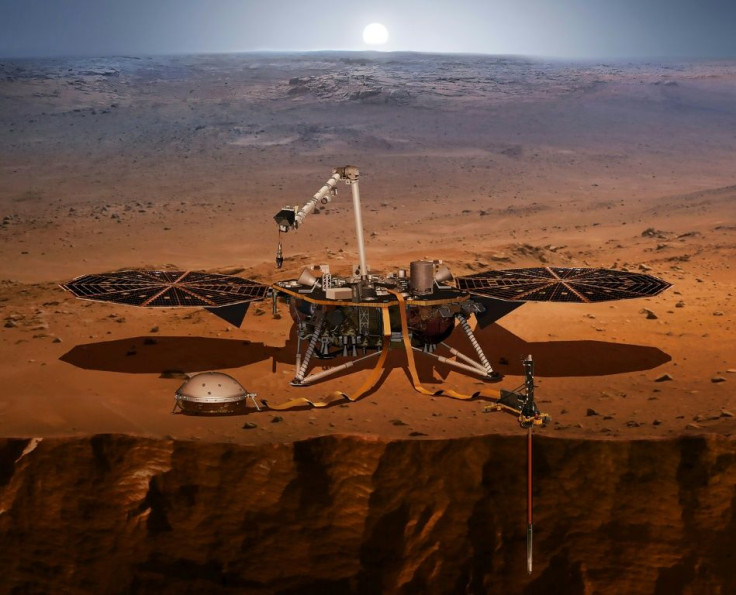NASA's Insight Marks First 'Land-iversary' On Mars

NASA ’s InSight lander arrived on the surface of Mars on Nov. 26, 2018. The past year has truly been an eventful one for InSight.
Happy ‘Land-iversary’
NASA celebrated the InSight lander’s first anniversary on Mars in a simple tweet marking InSight’s milestones and thanking the team behind the mission.
Happy “Land-iversary” to me! 🥳
— NASA InSight (@NASAInSight) November 26, 2019
Since I arrived at #Mars, I’ve set down instruments and recorded weather, marsquakes and more. It's been quite a year. Of all the things to be thankful for, my hardworking team is at the top of my list! pic.twitter.com/SvtiIaGvuP
Among its achievements since it arrived, InSight has recorded the weather on Mars and sent back incredible images of Mars, from its first selfie to images of the Martian landscape.
Only recently, NASA also reported that InSight captured noises with its Seismic Experiment for Interior Structures instrument. Evidently, the sounds were actually signs of vibrations on the planet, the first being captured only last April. So far 21 out of over a hundred vibrations are being seriously considered as Marsquakes.
One of its main missions, however, is still on-going. Using the heat probe called Heat Flow and Physical Properties Package (HP3), also known as “the mole,” InSight is digging into the surface of the planet to gather data about Mars’s inner structure. However, it appears InSight has been having some difficulties with the task as it so far has only been able to dig a foot into the surface instead of the hoped-for 10 to 16 feet.
That said, the team is already working on the issues, which may have been caused either by a rock blocking its way or because the mole has lost friction with the soil. So far, InSight has been able to move a few centimeters more.
InSight
NASA’s InSight, short for Interior Exploration using Seismic Investigations, Geodesy and Heat Transport, was designed specifically to investigate the inner space of Mars, meaning its crust, mantle and core.
To do this, InSight’s goal is to delve beneath the surface to find the processes that led to the formation of the planet. Vital information Insight needs to find includes the temperature of the planet and its seismology.
By studying Mars, the hope is to get insight into how the planets in the inner solar system, including the Earth, formed billions of years ago.
© Copyright IBTimes 2024. All rights reserved.






















